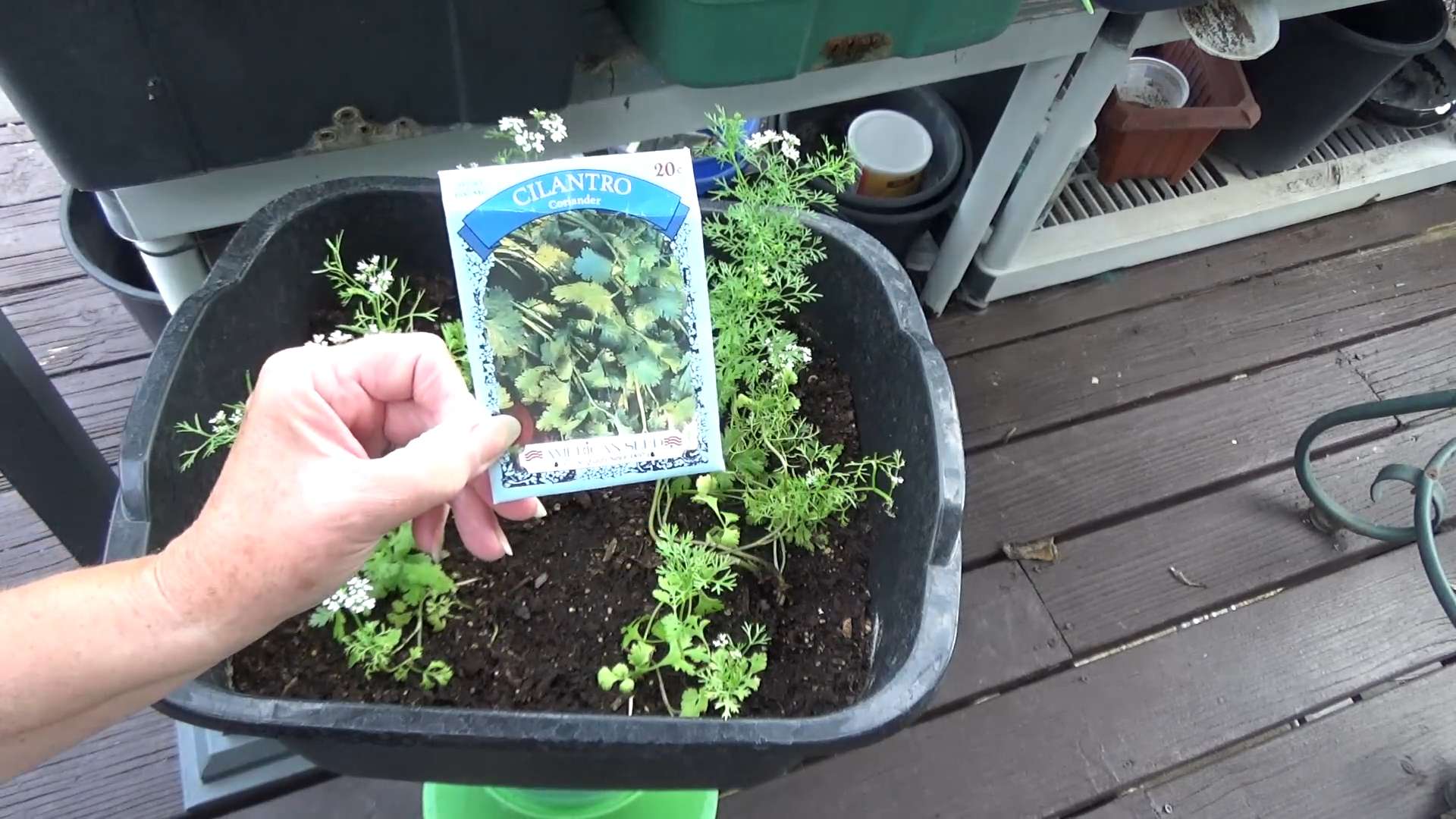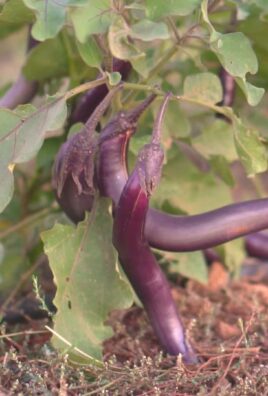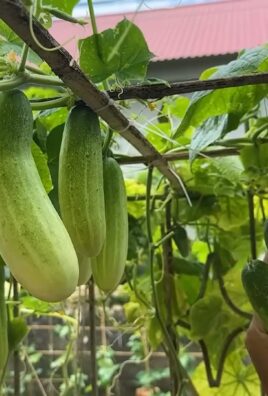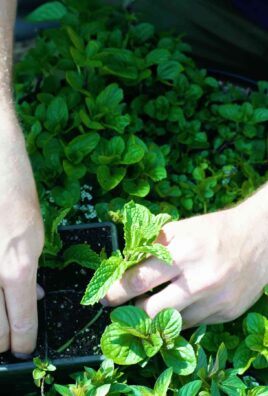Grow Cilantro at Home with these simple, yet effective DIY tricks and watch your culinary creations reach a whole new level of deliciousness! Have you ever been frustrated by store-bought cilantro that wilts within days, leaving you with a sad, soggy bunch instead of the vibrant herb you craved? I know I have! That’s why I’m so excited to share these easy-to-follow tips that will empower you to cultivate your own thriving cilantro patch, right in your own home.
Cilantro, also known as coriander (the seeds), has a rich history, dating back thousands of years. Ancient Egyptians used it for medicinal purposes, and it’s been a staple in cuisines across the globe, from Latin America to Southeast Asia. But beyond its historical significance, fresh cilantro is simply indispensable for adding that bright, citrusy zing to your favorite dishes.
Let’s face it, buying fresh herbs can be expensive and wasteful. Plus, the flavor of homegrown cilantro is simply unmatched! With these DIY hacks, you’ll not only save money and reduce waste, but you’ll also have a constant supply of fresh, flavorful cilantro at your fingertips. Whether you have a sprawling garden or just a sunny windowsill, I’ll show you how to grow cilantro at home successfully and enjoy its vibrant flavor all year round. Get ready to unleash your inner gardener and elevate your cooking game!

Grow Your Own Cilantro: A Beginner’s Guide
Hey there, fellow plant enthusiasts! I’m so excited to share my tried-and-true method for growing cilantro right in your own home. Fresh cilantro is a game-changer in the kitchen, and trust me, once you’ve tasted homegrown, you’ll never go back to the store-bought stuff. It’s fresher, more flavorful, and incredibly rewarding to harvest something you nurtured yourself. Let’s dive in!
Choosing the Right Cilantro Variety
Before we get our hands dirty, let’s talk about cilantro varieties. While most cilantro looks pretty similar, some are better suited for certain climates or growing conditions.
* Slow-Bolting Varieties: These are your best bet, especially if you live in a warmer climate. Bolting means the plant prematurely goes to seed, which makes the leaves bitter and less desirable. Look for varieties like ‘Slow Bolt’, ‘Santo’, or ‘Long Standing’.
* Regular Cilantro: These varieties are perfectly fine if you live in a cooler climate or plan to harvest frequently. Just be aware that they might bolt more quickly in warmer temperatures.
Gathering Your Supplies
Okay, time to assemble our gardening arsenal! Here’s what you’ll need:
* Cilantro Seeds: You can find these at most garden centers or online.
* Potting Mix: Use a well-draining potting mix. Avoid using garden soil, as it can compact and hinder drainage.
* Container: Choose a pot that’s at least 6 inches deep and wide. Cilantro has a taproot, so it needs some room to grow. Make sure your pot has drainage holes!
* Watering Can or Spray Bottle: For gentle watering.
* Grow Lights (Optional): If you don’t have a sunny spot, grow lights can be a lifesaver.
* Small Shovel or Trowel: For planting.
* Plant Food (Optional): A balanced liquid fertilizer can give your cilantro a boost.
Planting Your Cilantro Seeds
This is where the magic happens! Follow these steps carefully:
1. Prepare Your Pot: Fill your container with potting mix, leaving about an inch of space at the top. Gently pat down the soil.
2. Sow the Seeds: Cilantro seeds are actually small fruits containing two seeds each. To improve germination, you can gently crush the seeds between two hard surfaces (like a rolling pin and a cutting board). This helps break the seed coat.
3. Space the Seeds: Sprinkle the seeds evenly over the surface of the soil. Aim for about 1-2 inches between seeds.
4. Cover the Seeds: Lightly cover the seeds with about ¼ inch of potting mix.
5. Water Gently: Use a watering can or spray bottle to gently moisten the soil. Be careful not to dislodge the seeds.
6. Provide Light: Place your pot in a sunny location that receives at least 6 hours of sunlight per day. If you don’t have enough natural light, use grow lights.
7. Maintain Moisture: Keep the soil consistently moist, but not soggy. Water when the top inch of soil feels dry to the touch.
Caring for Your Cilantro Plants
Now that your cilantro is planted, it’s time to nurture it!
1. Watering: As mentioned before, keep the soil consistently moist. Check the soil moisture daily, especially during hot weather.
2. Fertilizing (Optional): If you want to give your cilantro a boost, you can fertilize it every 2-3 weeks with a balanced liquid fertilizer diluted to half strength.
3. Pinching Back: Once your cilantro plants are a few inches tall, you can start pinching back the stems. This encourages bushier growth and delays bolting. Simply snip off the top inch or so of the stems.
4. Preventing Bolting: Bolting is the enemy of cilantro lovers! To prevent bolting, try to keep your plants cool. Provide shade during the hottest part of the day, and water regularly. You can also try planting your cilantro in a cooler location.
5. Pest Control: Cilantro is generally pest-resistant, but occasionally aphids or spider mites might show up. If you notice any pests, you can try spraying them off with a strong stream of water or using an insecticidal soap.
Harvesting Your Cilantro
The best part! You can start harvesting your cilantro leaves when the plants are about 6-8 inches tall.
1. Harvesting Technique: Use scissors or pruning shears to snip off the outer leaves, leaving the inner leaves to continue growing.
2. Harvesting Frequency: Harvest regularly to encourage continued growth and delay bolting.
3. Harvesting for Seeds: If you want to collect cilantro seeds (coriander), allow some of your plants to bolt. Once the seed heads turn brown and dry, you can harvest them. Store the seeds in an airtight container in a cool, dry place.
Troubleshooting Common Cilantro Problems
Even with the best care, you might encounter a few challenges along the way. Here are some common problems and how to fix them:
* Yellowing Leaves: This could be a sign of overwatering, underwatering, or nutrient deficiency. Check the soil moisture and adjust your watering accordingly. If the soil is consistently moist, you might be overwatering. If the soil is dry, you need to water more frequently. You can also try fertilizing your plants with a balanced liquid fertilizer.
* Leggy Growth: This usually indicates that your plants aren’t getting enough light. Move them to a sunnier location or use grow lights.
* Bolting: As mentioned before, bolting is when the plant prematurely goes to seed. To prevent bolting, keep your plants cool, provide shade during the hottest part of the day, and water regularly.
* Slow Growth: This could be due to a variety of factors, including poor soil, lack of nutrients, or insufficient light. Make sure you’re using a well-draining potting mix, fertilize your plants regularly, and provide them with plenty of light.
* Damping Off: This is a fungal disease that can affect seedlings. To prevent damping off, use a sterile potting mix, avoid overwatering, and provide good air circulation.
Succession Planting for a Continuous Harvest
To enjoy a continuous supply of fresh cilantro, consider succession planting. This means planting new seeds every 2-3 weeks. This way, you’ll always have a batch of cilantro ready to harvest.
1. Timing: Start a new batch of seeds every 2-3 weeks.
2. Location: You can plant the new seeds in the same container as your existing cilantro plants, or in a separate container.
3. Care: Follow the same planting and care instructions as before.
Tips and Tricks for Growing Amazing Cilantro
Here are a few extra tips to help you grow the best cilantro ever:
* Soak Your Seeds: Soaking your cilantro seeds in water for 24 hours before planting can improve germination rates.
* Use a Seedling Heat Mat: A seedling heat mat can help speed up germination, especially in cooler climates.
* Rotate Your Crops: If you’re growing cilantro in the same container year after year, consider rotating your crops to prevent soilborne diseases.
* Don’t Overcrowd: Give your cilantro plants enough space to grow. Overcrowding can lead to stunted growth and increased susceptibility to pests and diseases.
* Enjoy the Flowers: Cilantro flowers are edible and have a delicate flavor. You can add them to salads or use them as a garnish.
Using Your Homegrown Cilantro
Now that you have a bountiful harvest of fresh cilantro, it’s time to put it to use!
* Fresh Use: Cilantro is best used fresh. Add it to salsas, guacamole, tacos, soups, salads, and stir-fries.
* Storage: To store cilantro, wrap it in a damp paper towel and place it in a plastic bag in the refrigerator. It should last for about a week.
* Freezing: You can also freeze cilantro. Chop it up and place it in ice cube trays with water or olive oil. Once frozen, transfer the cubes to a freezer bag.
* Drying: Drying cilantro is not recommended, as it loses much of its flavor.
Growing cilantro at home is a rewarding experience that will add a burst of flavor to your meals. With a little bit of care and attention, you can enjoy a continuous supply of fresh cilantro all year round. Happy gardening!

Conclusion
So, there you have it! Growing cilantro at home isn’t just a fun gardening project; it’s a game-changer for your culinary adventures. Forget those sad, wilted bunches from the grocery store that cost a fortune and seem to disappear within days. With a little effort, you can have a constant supply of fresh, vibrant cilantro right at your fingertips. The difference in flavor between store-bought and homegrown cilantro is truly remarkable – the homegrown variety boasts a brighter, more intense aroma and a zest that will elevate your dishes to a whole new level.
But the benefits extend beyond just taste. Think about the satisfaction of nurturing a plant from seed to harvest, the money you’ll save on groceries, and the reduced environmental impact of not relying on commercially grown and transported herbs. Plus, it’s incredibly rewarding to be able to snip off exactly what you need, when you need it, ensuring that your cilantro is always at its peak freshness.
This DIY trick is a must-try because it empowers you to take control of your herb supply, guaranteeing a consistent source of fresh, flavorful cilantro. It’s also a fantastic way to connect with nature, learn about plant life cycles, and add a touch of green to your living space.
Looking for variations? Consider these ideas:
* **Succession Planting:** Plant new seeds every few weeks to ensure a continuous harvest throughout the growing season.
* **Container Gardening:** If you’re short on space, cilantro thrives in containers on balconies, patios, or even windowsills.
* **Hydroponics:** For a more advanced approach, try growing cilantro hydroponically for faster growth and higher yields.
* **Companion Planting:** Plant cilantro alongside other herbs and vegetables that benefit from its presence, such as carrots, tomatoes, and basil. Cilantro is known to repel certain pests, making it a valuable addition to your garden.
* **Cilantro Varieties:** Experiment with different cilantro varieties, such as ‘Santo’ or ‘Slow Bolt,’ to find the ones that best suit your taste and growing conditions. ‘Slow Bolt’ is particularly useful in warmer climates as it is less prone to bolting (going to seed).
Don’t be intimidated if you’re new to gardening. Growing cilantro is relatively easy, and even if you encounter a few challenges along the way, the rewards are well worth the effort. The key is to provide the right conditions – well-draining soil, adequate sunlight, and regular watering – and to be patient.
So, what are you waiting for? Grab some seeds, find a sunny spot, and embark on your cilantro-growing adventure today! We’re confident that you’ll be amazed at how easy and rewarding it is to grow your own fresh herbs.
We’d love to hear about your experiences! Share your tips, tricks, and photos of your homegrown cilantro on social media using [Your Hashtag]. Let’s create a community of cilantro enthusiasts and inspire others to discover the joy of growing their own food. Happy gardening!
Frequently Asked Questions (FAQ)
What is the best time of year to plant cilantro?
Cilantro is a cool-season herb, so the best time to plant it is in the spring or fall. Avoid planting during the hottest months of summer, as high temperatures can cause it to bolt (go to seed) prematurely. In warmer climates, you can plant cilantro throughout the winter. If you live in an area with harsh winters, start your seeds indoors a few weeks before the last expected frost.
How much sunlight does cilantro need?
Cilantro needs at least 6 hours of sunlight per day. However, in hotter climates, it can benefit from some afternoon shade to prevent bolting. If you’re growing cilantro indoors, place it near a sunny window or use a grow light.
What kind of soil is best for growing cilantro?
Cilantro prefers well-draining soil that is rich in organic matter. A slightly acidic to neutral pH (6.0-7.0) is ideal. You can amend your soil with compost or other organic materials to improve its drainage and fertility. If you’re growing cilantro in containers, use a high-quality potting mix.
How often should I water cilantro?
Cilantro needs consistent moisture to thrive. Water regularly, especially during hot, dry weather. The soil should be kept moist but not waterlogged. Check the soil moisture by sticking your finger into the soil – if the top inch feels dry, it’s time to water. Avoid overhead watering, as this can lead to fungal diseases.
How do I prevent cilantro from bolting?
Bolting is a common problem with cilantro, especially in hot weather. To prevent bolting, choose a slow-bolt variety, provide afternoon shade, and water regularly. You can also pinch off any flower buds that appear to encourage leaf production.
When and how should I harvest cilantro?
You can start harvesting cilantro leaves when the plants are about 6 inches tall. Snip off the outer leaves, leaving the inner leaves to continue growing. Regular harvesting will encourage the plant to produce more leaves. Avoid harvesting more than one-third of the plant at a time.
Can I grow cilantro from seed?
Yes, cilantro is easy to grow from seed. Sow the seeds directly into the soil or start them indoors a few weeks before the last expected frost. Cilantro seeds have a hard outer shell, so you can soak them in water for 24 hours before planting to improve germination.
Can I grow cilantro indoors?
Yes, cilantro can be grown indoors, provided it receives enough sunlight or artificial light. Use a well-draining potting mix and water regularly. Place the plant near a sunny window or use a grow light to supplement natural light.
What are some common pests and diseases that affect cilantro?
Cilantro is generally pest-resistant, but it can be susceptible to aphids, spider mites, and whiteflies. These pests can be controlled with insecticidal soap or neem oil. Cilantro can also be affected by fungal diseases, such as powdery mildew and downy mildew. To prevent these diseases, avoid overhead watering and ensure good air circulation.
Can I freeze cilantro?
Yes, you can freeze cilantro to preserve it for later use. Wash and dry the cilantro leaves thoroughly, then chop them and place them in an airtight container or freezer bag. You can also freeze cilantro in ice cube trays with water or olive oil.
What are some ways to use fresh cilantro?
Fresh cilantro is a versatile herb that can be used in a variety of dishes. It’s commonly used in Mexican, Asian, and Indian cuisine. Add it to salsas, guacamole, soups, stews, salads, and stir-fries. Cilantro is also a great addition to marinades and sauces.
My cilantro bolted, can I still use it?
Yes, even if your cilantro has bolted, you can still use the leaves, although they may have a slightly more bitter flavor. You can also harvest the cilantro seeds (coriander) for use as a spice.
Is cilantro the same as coriander?
Yes and no. Cilantro refers to the leaves and stems of the plant, while coriander refers to the seeds. Both cilantro and coriander come from the same plant, *Coriandrum sativum*.
How do I save cilantro seeds for next year?
Allow the cilantro plant to flower and go to seed. Once the seed heads are dry and brown, cut them off and place them in a paper bag. Allow the seeds to dry completely, then store them in an airtight container in a cool, dark place.





Leave a Comment